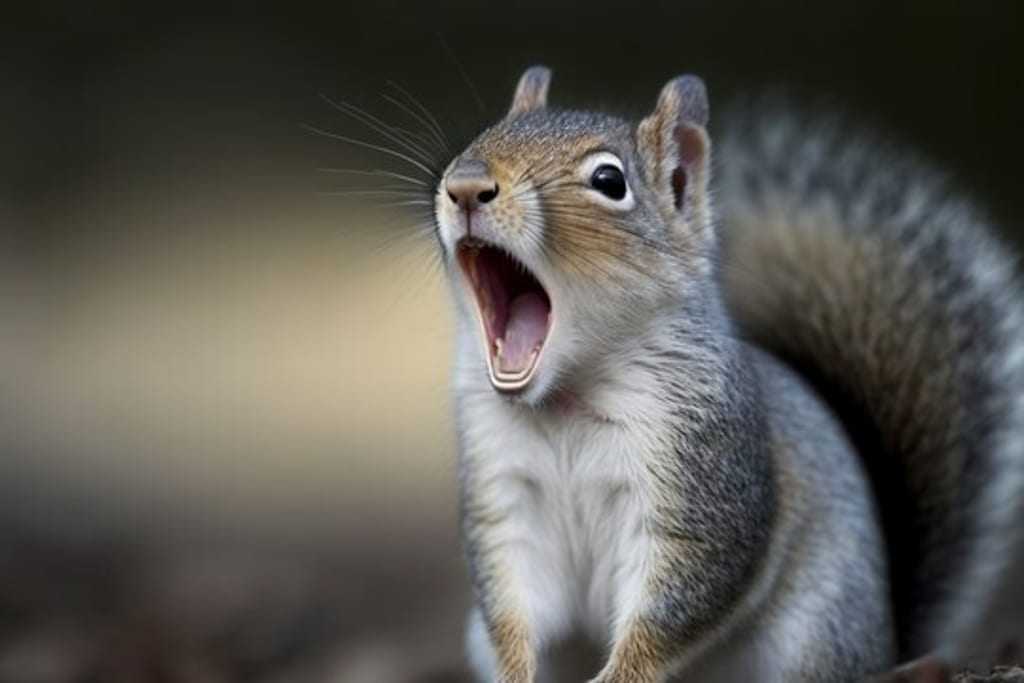Squirrel talk
I needed to know why squirrels are everywhere.

Eastern gray squirrels seem to be everywhere these days—dashing through backyards, chilling on every street corner, and climbing trees in every park. But how did they become such common inhabitants of our urban landscapes? To understand their journey to prominence, we need to rewind to the 1840s when Americans started reshaping their environments to welcome these once-perceived nuisances.
For centuries, they were mostly considered pests, often hunted for sport or food. However, as attitudes began to shift in the mid-19th century, when we started to appreciate our wildlife. Cities started redesigning parks and other spaces to accommodate the eastern gray squirrel for mostly entertainment purposes and once people even began deliberately feeding them, they unknowingly paved the way for their territorial expansion beyond their native forests of eastern and central North America. By taking care of them in the wild, we got to see more of these creatures' personalities, and we started bringing them to other parts of the world to share the love of these fluffy tailed creatures. Some people even brought them into their homes!
In the United Kingdom, gray squirrels were being sold as a exotic creature for novelty and ornamental appeal on private estates. Unfortunately, these sales were poorly regulated, leading to rapid introduction to the wild. This sudden increase posed a significant threat to native European red squirrels, which are smaller and less competitive. Eastern gray squirrels out competed their red counterparts for food and nesting sites, and weren’t regulated by natural predators, other than the European pine marten which is mostly absent from England and Wales. intensifying their impact. Adding to the ecological imbalance, eastern grays’ carry parapoxvirus which is harmless to them but deadly to the european red, furthering the decline of native populations.
In the few areas where european red squirrels survived, such as islands of Anglesey, Brownsea and the Isle of Wight there are a number of programs to suppress or exterminate eastern grays’ and prevent them from reaching these areas in order to allow european reds’ populations to recover and grow. Alongside targeting eastern gray, they are protecting european red habits, breeding them in captivity, and raising awareness of the threat to red squirrels and encouraging people to plant certain bushes and put out feeders with nuts. If you live in one of the european reds’ natural habits, please find your local conservation website and see what you can do to help.
For contrast, in Vancouver Island, Canada the eastern gray squirrel is thriving without harming the ecosystem. Brought over from a game farms in the 1900s or being tossed out as ‘unwanted’ pets in the 1870s, they began their territorial expansion of Canada. Eastern grays are native in five provinces of Canada, and no cases of parapoxvirus have ever been seen. They even co-occur with the american Red squirrel(different from the european red squirrel) but the eastern gray tends to do better in these new environments than its american red counterpart. The american reds’ habitat on Vancouver Island is being increasingly lost to urbanization, and not because of the competitive displacement by gray squirrels like the european red. Canadian governments so far have shown no interest in removing the gray squirrels population, seeing as many generations have grown up with them in their backyards, they pose no threat at this moment, because as the predators keep the population under control. But they will continue to use the eastern gray as a scapegoat for the declining population of american reds instead of admitting fault, so they can continue urbanization and contribute to habitat loss.
Overall, the prominence of eastern gray squirrels in urban settings reflects a complicated interplay of human intervention, ecological competition, and species adaptation.
Please be nice to the environment and maybe donate to my hyperfixation research and poem journal fund, or don’t who am I to tell you what to do.
About the Creator
Alyce Willow
Hello, I am a young journalist and poet. I have dedicated the last few years to honing my writing skills and have found joy in using words to express my thoughts and emotions. Thank you for taking the time to read about my hyperfixations.
Enjoyed the story? Support the Creator.
Subscribe for free to receive all their stories in your feed. You could also pledge your support or give them a one-off tip, letting them know you appreciate their work.






Comments (2)
It's really interesting to read about Eastern gray squirrels....
The Eastern Gray has pushed out the native Western Gray in WA state. We also have Douglas Squirrels, the little cute native ones that chatter in the trees telling everyone they see you.